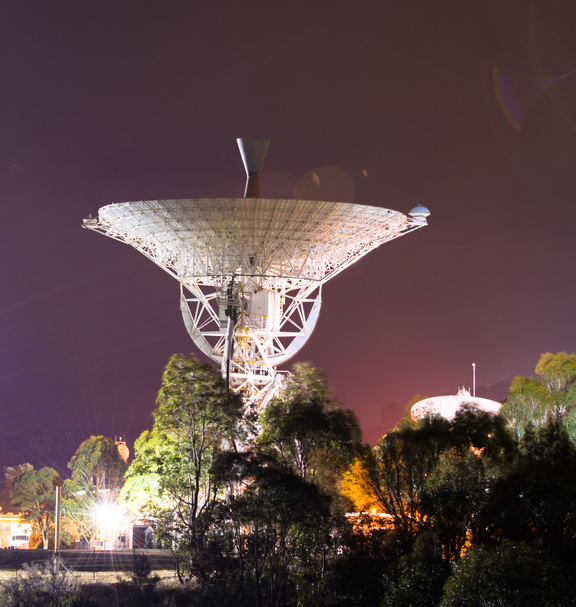While NASA was scrambling to locate Voyager 2, which it accidentally lost contact with last week, Canberra Deep Space Communication Complex was quietly listening intently to a carrier signal from the spacecraft almost 20 billion kilometres away. We found it.
Our 70-metre wide, 22-storey-high dish at Tidbinbilla – the only antenna in the world capable of communicating with Voyager 2 – detected a “heartbeat” from the spacecraft overnight, or a tone that lets Earth know it’s still there and transmitting.
Media spokesman for Canberra Deep Space Communication Complex, Glen Nagle, says they will now attempt to send commands to realign the spacecraft’s antenna.
As for the NASA engineer’s incorrect command that knocked the spacecraft’s antenna off two degrees, Mr Nagle says just two degrees can mean you’re out by millions of kilometres.
“We’ll be transmitting to realign the spacecraft over the next few days,” Mr Nagle says. “It takes 19 hours for the signal to get out to the spacecraft. Then we’ve got to wait for an answer to get back, then we’ll relay another command. We’ll try several times this week.”
If Canberra’s efforts don’t work, NASA’s mission team will wait until October, when the spacecraft is pre-programmed to carry out automatic calculations to get its antenna pointed back towards Earth.
As for the reason why such an error was made, Mr Nagle says investigations have yet to be carried out, but a possible cause is “a missed bit of data on the spacecraft”.
“The magnetic tape it uses to record commands that we send to it, it only carries 256 kilobytes of information, that’s hardly anything,” he says. “Some parts of that tape over the past 46 years have been affected by radiation, which means those parts are dead on the tape. You may have had a piece of that tape degraded to a point where it missed a single bit of information, it could’ve been anything, we don’t know.”
Incredibly, Voyager 2 is now in its 46th year of space travel, even though it was designed for a 12-year mission. Mr Nagle says every day is a bonus.
“Every day is a chance to never hear from it again,” he says. “Here we are, nearly 50 years later, and it’s still going strong. You never know, something could break in that radiation environment in space, dealing with cosmic radiation, high-energy particles streaking through the galaxy, any one of those could strike an important component on the spacecraft and fry it, and never hear from it again. We’ve been on borrowed time since it finished it prime mission in 1989.”
This is not the first time such an incident has happened. Mr Nagle says Canberra Deep Space Communication Complex will continue to listen in “because it’s in the schedule every day. The Voyager 2 spacecraft is near and dear to our hearts”.



